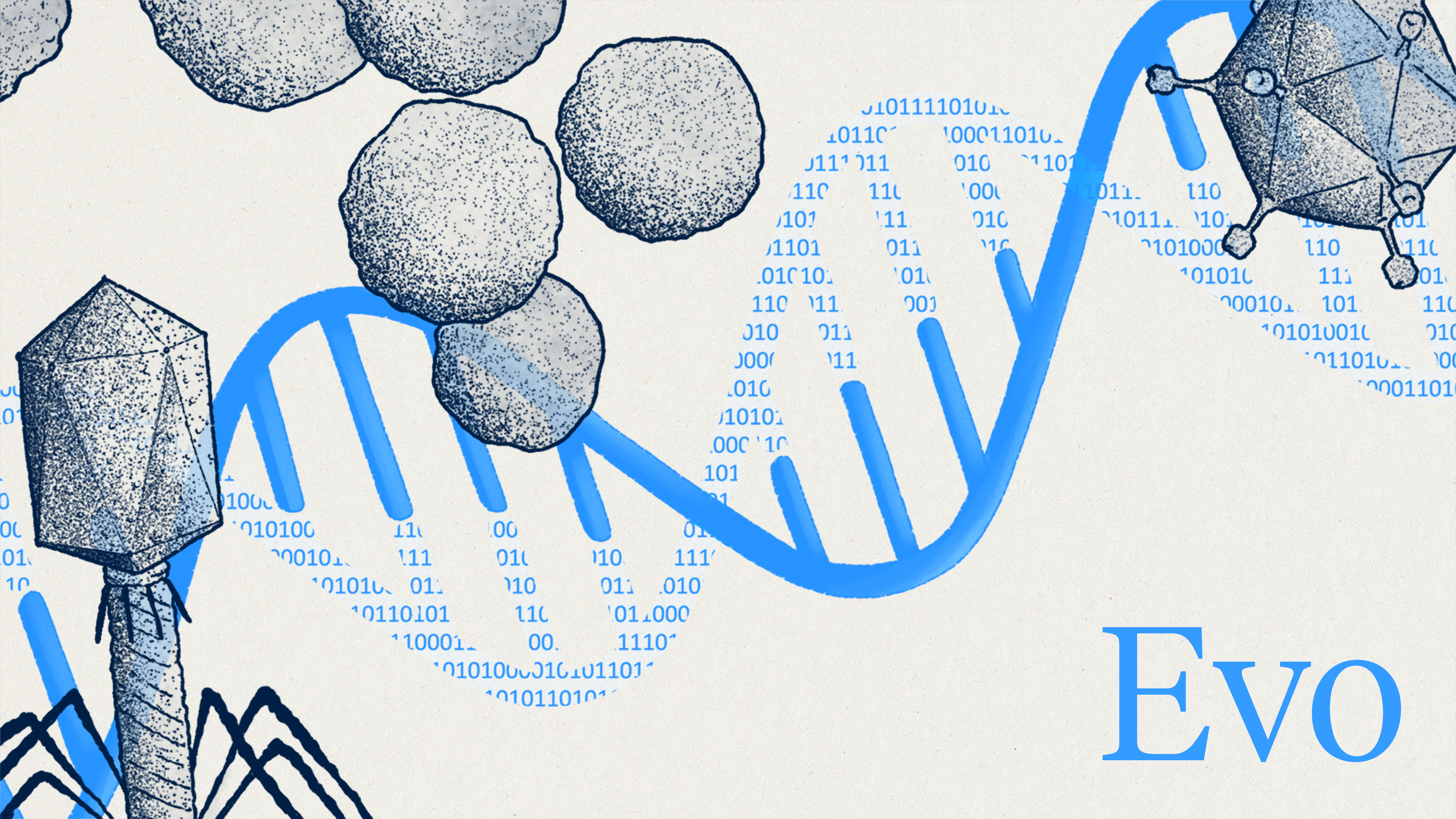Evo: 从分子到基因组尺度的DNA基础建模

Evo是一个能够进行长上下文建模和设计的生物学基础模型。 Evo使用StripedHyena架构,能够以单核苷酸、字节级分辨率对序列进行建模,计算和内存相对于上下文长度近乎线性扩展。 Evo拥有70亿参数,在OpenGenome上训练,这是一个含有约3000亿个标记的原核生物全基因组数据集。
我们在论文"用Evo从分子到基因组尺度进行序列建模和设计"和配套博客文章中描述了Evo。
我们提供以下模型检查点:
| 检查点名称 | 描述 |
|---|---|
evo-1-8k-base | 使用8,192上下文预训练的模型。我们将此模型用作分子尺度微调任务的基础模型。 |
evo-1-131k-base | 使用evo-1-8k-base作为基础模型,用131,072上下文预训练的模型。我们使用此模型在基因组尺度推理和生成序列。 |
新闻
我们发现并修复了一个与某些投影错误排列相关的问题,该问题影响生成质量。要在HuggingFace上使用新的模型修订版,请按如下方式加载:
config = AutoConfig.from_pretrained(model_name, trust_remote_code=True, revision="1.1_fix")
model = AutoModelForCausalLM.from_pretrained(
model_name,
config=config,
trust_remote_code=True,
revision="1.1_fix"
)
目录
设置
要求
Evo基于StripedHyena。
Evo使用FlashAttention-2,可能不适用于所有GPU架构。 请查阅FlashAttention GitHub仓库获取当前支持的GPU列表。
确保在您的系统上安装正确的PyTorch版本。
安装
您可以使用pip安装Evo
pip install evo-model
或直接从GitHub源代码安装
git clone https://github.com/evo-design/evo.git
cd evo/
pip install .
我们建议您先安装PyTorch库,然后再安装所有其他依赖项(由于flash-attn库的依赖问题;参见例如这个问题)。
我们的一个示例脚本,演示如何从用Evo生成序列到折叠蛋白质(scripts/generation_to_folding.py),还需要安装prodigal。我们为此创建了一个environment.yml文件:
conda env create -f environment.yml
conda activate evo-design
使用
以下是如何下载Evo并通过Python API在本地使用它的示例。
from evo import Evo
import torch
device = 'cuda:0'
evo_model = Evo('evo-1-131k-base')
model, tokenizer = evo_model.model, evo_model.tokenizer
model.to(device)
model.eval()
sequence = 'ACGT'
input_ids = torch.tensor(
tokenizer.tokenize(sequence),
dtype=torch.int,
).to(device).unsqueeze(0)
with torch.no_grad():
logits, _ = model(input_ids) # (batch, length, vocab)
print('Logits: ', logits)
print('Shape (batch, length, vocab): ', logits.shape)
批量推理的示例可以在scripts/example_inference.py中找到。
我们提供了一个示例脚本,演示如何提示模型并根据提示采样一组序列。
python -m scripts.generate \
--model-name 'evo-1-131k-base' \
--prompt ACGT \
--n-samples 10 \
--n-tokens 100 \
--temperature 1. \
--top-k 4 \
--device cuda:0
我们还提供了一个示例脚本,用于使用模型对一组序列的对数似然进行评分。
python -m scripts.score \
--input-fasta examples/example_seqs.fasta \
--output-tsv scores.tsv \
--model-name 'evo-1-131k-base' \
--device cuda:0
HuggingFace
Evo已集成到HuggingFace。
from transformers import AutoConfig, AutoModelForCausalLM
model_name = 'togethercomputer/evo-1-8k-base'
model_config = AutoConfig.from_pretrained(model_name, trust_remote_code=True, revision="1.1_fix")
model_config.use_cache = True
model = AutoModelForCausalLM.from_pretrained(
model_name,
config=model_config,
trust_remote_code=True,
revision="1.1_fix"
)
Together API
Evo可通过Together AI的网页界面使用,您可以在类似聊天的界面中生成DNA序列。
对于更详细或批量工作流程,您可以使用以下简单示例调用Together API。
import openai
import os
# 在此填写您的API信息。
client = openai.OpenAI(
api_key=TOGETHER_API_KEY,
base_url='https://api.together.xyz',
)
chat_completion = client.chat.completions.create(
messages=[
{
"role": "system",
"content": ""
},
{
"role": "user",
"content": "ACGT", # 用序列提示模型。
}
],
model="togethercomputer/evo-1-131k-base",
max_tokens=128, # 采样一些新标记。
logprobs=True
)
print(
chat_completion.choices[0].logprobs.token_logprobs,
chat_completion.choices[0].message.content
)
引用
引用Evo时,请引用以下预印本。
@article {nguyen2024sequence,
author = {Eric Nguyen and Michael Poli and Matthew G Durrant and Armin W Thomas and Brian Kang and Jeremy Sullivan and Madelena Y Ng and Ashley Lewis and Aman Patel and Aaron Lou and Stefano Ermon and Stephen A Baccus and Tina Hernandez-Boussard and Christopher Ré and Patrick D Hsu and Brian L Hie},
title = {Sequence modeling and design from molecular to genome scale with Evo},
year = {2024},
doi = {10.1101/2024.02.27.582234},
publisher = {Cold Spring Harbor Laboratory},
URL = {https://www.biorxiv.org/content/early/2024/02/27/2024.02.27.582234},
journal = {bioRxiv}
}

 Github
Github Huggingface
Huggingface 文档
文档 论文
论文










